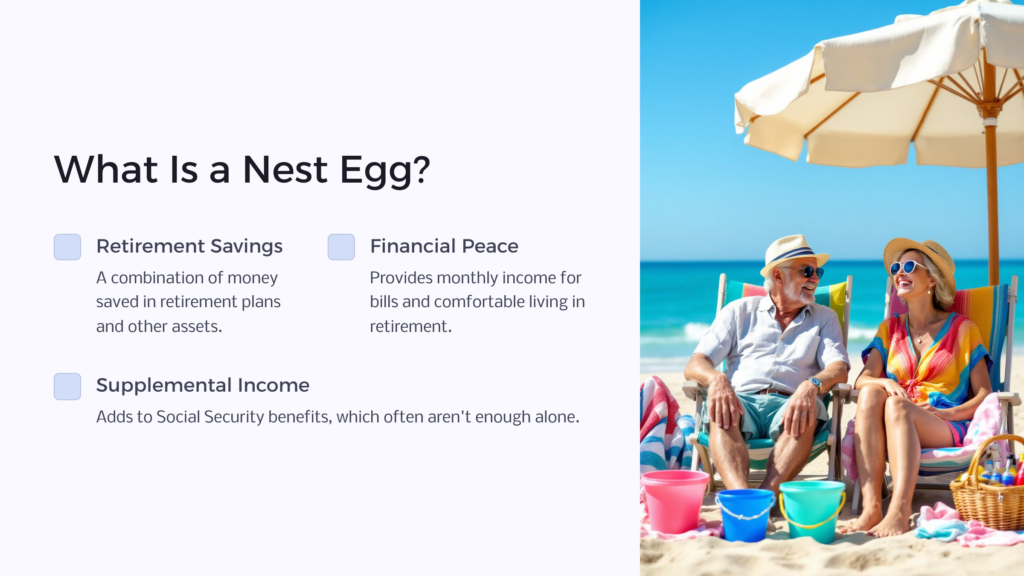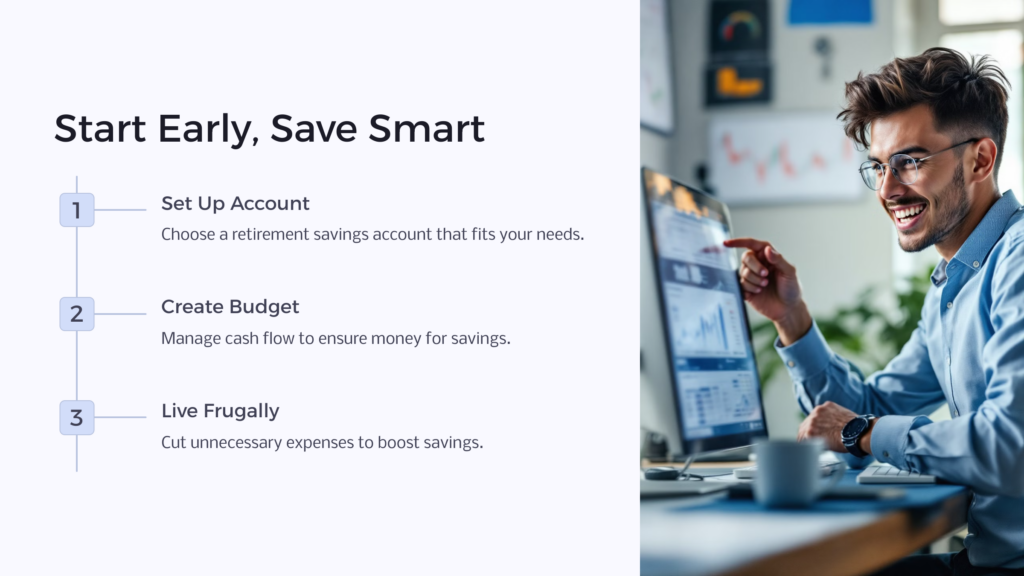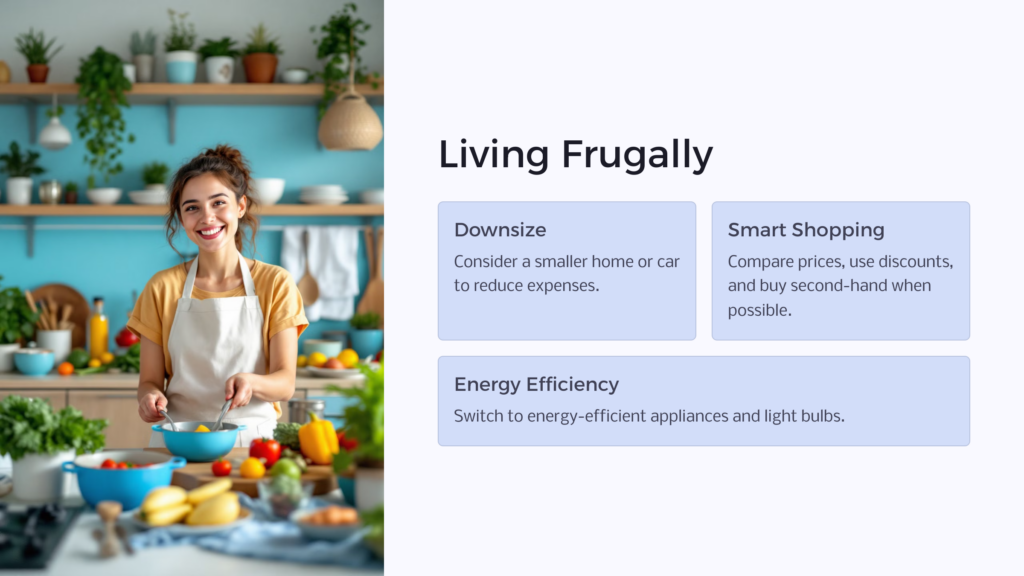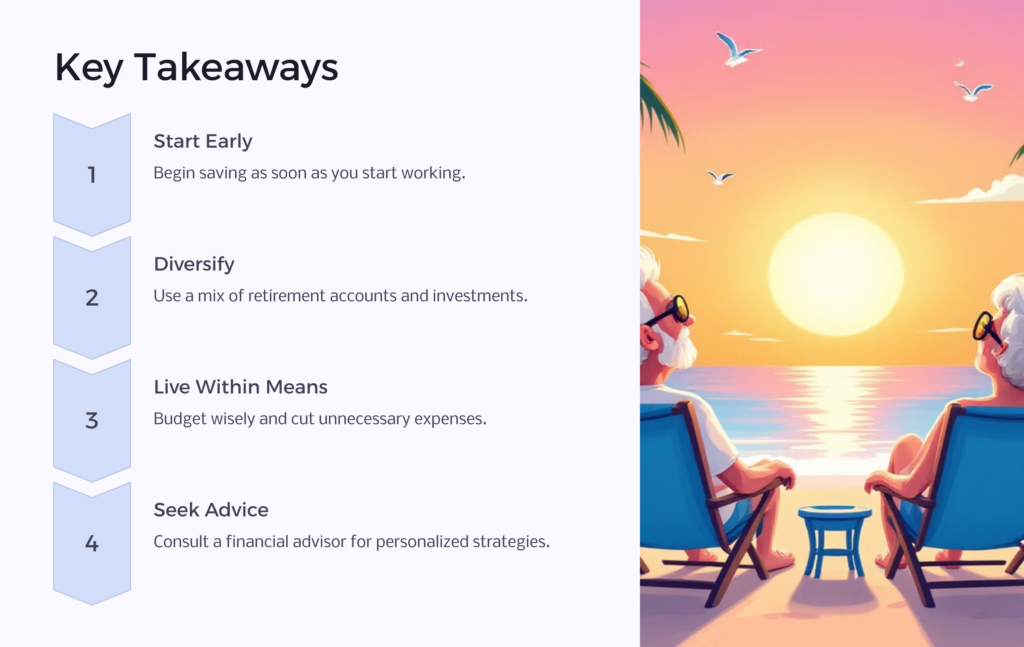Retirement savings is something you should think about as soon as you begin working. Building a nest egg now can give you the money you’ll need to retire comfortably. Sticking to a budget, putting money into a retirement account with reasonable interest rates, and making the right investments are a few ways to grow a nice nest egg into the future.
7 Ways to Build a Nest Egg
- Set up a retirement savings account
- Create a budget
- Live frugally
- Pay off your mortgage
- Pay off other debts
- Keep adding to your nest egg with extras
- Invest your income
Most people know that saving for retirement is crucial. Still, many people don’t do it because they don’t know where to start or don’t have extra money to put toward their retirement. A retirement nest egg can provide you with a guaranteed income after you retire, though, which is something no retiree can afford not to have.
Social security income should only be a portion of your retirement income, while your nest egg contributes to the other part of your income. Growing a retirement fund can be tricky when you don’t know where to start or what important steps to take to make your money work for you. By cutting living expenses, paying down debt, and following a financial plan, you could be on the path to a sound financial future.
What Is a Nest Egg?

Not many people want to continue working after retirement. Unfortunately, it’s the only choice for many who don’t have money saved or don’t have enough cash saved in their retirement fund to carry them through retirement comfortably. Retirees can, however, retire with financial peace of mind if they have a nest egg that holds their savings.
A nest egg is a combination of money saved in a retirement plan and other assets you’ve saved, such as your stock market portfolio or real estate. When you reach retirement age, you can access the money you’ve saved to provide you with the monthly income you’ll need to pay bills and live comfortably.
Retirees are entitled to social security benefits when they reach retirement age. However, the monthly amount they receive is often not enough for a sustainable income. That’s when having your own income source to add to your social security benefits comes in handy, and you can get that income from your nest egg.
It’s a common goal to try to have $1,000,000 saved by the time you plan to retire. But you don’t need to be a millionaire to have a nest egg that benefits you as a retiree. Having any amount of money saved for retirement is better than having no nest egg at all.
7 Ways to Build a Nest Egg

The larger your nest egg, the more retirement income you can have to live on. Saving for retirement should start as early in your working life as possible to gradually build a nest egg, learn healthy wealth management practices, and reach your financial goal for retirement. The following tips can set you on the path toward your reliable retirement fund.
1. Set Up a Retirement Savings Account
All retirees who have earned enough in their lifetime to qualify for Social Security retirement benefits are eligible for them. But, depending on how much you’ve made and the age at which you retire, those benefits on their own may not be enough to pay you a sustainable income through retirement.
A retirement plan can be the backup you need to add to that income when you reach retirement age. Many employers offer retirement plans for their employees, but you can also set up one on your own if you don’t have that benefit through your employer.
Types of Retirement Plans
There are a few types of retirement plans to choose from, each of which can meet your retirement needs differently. The most common types include:
401(k)
401(k) plans are those that employers usually offer to employees. These plans allow you to add money to them from your paycheck. Some companies will match a percentage of every contribution you make to grow your retirement fund in an automated way. For instance, if you contribute $100 from each paycheck and your employer matches 50%, you’ll have a $150 contribution from each paycheck.
Traditional IRA
A traditional IRA is a self-funded retirement account not put in place by an employer. These savings plans come with an annual contribution limit, but you may also earn a tax deduction for contributing to your IRA. Your money also grows tax-free. When you withdraw it upon retirement, you’ll pay taxes on your withdrawal.
Roth IRA
A Roth IRA is another self-funded retirement account that also has annual contribution limits. Unlike a traditional IRA, you will not have to pay tax on the money you withdraw, and you will not receive a tax deduction for any money you contribute through the year. The funds will, however, continue to grow tax-free like a traditional IRA.
2. Create a Budget
Budgeting is a process that keeps you in control of your finances and creates a little wiggle room to have money to spare for your nest egg. Whether you’re in debt doesn’t matter. A budget can still help you manage your cash flow better and ensure that there is some money left over to add to a savings account.
To make your monthly budget:
- Write down your income after taxes. If you own a business, make sure you consider only your net income after taxes and expenses.
- Jot down all your bills in categories, like utilities, debts (credit cards, loans, etc.), and entertainment.
- Ask yourself if you can cut any of these expenses. Subscription boxes and services, for example, can add up quickly, and you might realize that you can easily do without one or two of them.
- Set your goals. You might want to have a small portion of your income saved for short-term goals like entertainment or a new car, while a more significant portion goes toward long-term goals, like retirement.
- Figure out your income minus all expenses to see how much money you have to spare after making all monthly payments. You can then divide that extra into your short-term and long-term savings goals. You might decide that 20% goes toward your short-term goals while the other 80% goes toward your long-term goals.
3. Live Frugally

After your budget is in place is an excellent time to consider how you can keep cutting expenses to add even more to your nest egg. Living frugally doesn’t come easy for many people, but its benefits can be astronomical. Slashing unnecessary costs and shopping trips gives you more money to add to your retirement nest egg, which will continue to grow with interest in a retirement plan or savings account.
Here are a few ways to live more frugally:
- Downsize your home or car
- Eat at home more often instead of eating out
- Give yourself a strict budget when shopping
- Plan meals before grocery shopping
- Look for discounts on movie or event tickets
- Buy second-hand clothing, furniture, and other items
- Compare carefully when shopping for vehicle and homeowners insurance
- Negotiate credit card interest rates
- Refinance loans
- Switch to energy-efficient appliances and light bulbs
4. Pay Off Your Mortgage
Your mortgage is probably the largest debt you have, which is why it’s one you want to target to boost your personal finance goals. Your home is an investment and an asset that you can tap into if you do need more money in retirement. More importantly, paying off your mortgage before retirement frees up a significant amount of money each month.
You can pay off your mortgage early by adding extra cash toward your principal each month. Even adding $100 to $500 each month can help you save years of payments and thousands of dollars in interest over the life of your loan.
5. Pay Off Other Debts
Paying other debts as quickly as possible can also increase the extra money you have each month to put into your nest egg. Other debts can include an auto loan, personal loan, student loan, and credit card balances.
Focus on paying off smaller debts first to keep the momentum going. A $400 credit card bill is easier to target than a $5,000 student loan, so pay the credit card first. Then, use the money you were paying toward your credit card each month to pay off the student loan. The sooner you are debt-free, the sooner you can place your focus on building your nest egg.

6. Keep Adding to Your Nest Egg with Extras
It’s not just your regular income that you can use to add to your nest egg each year. Getting into the habit of investing any unexpected or extra cash in your nest egg as you receive it is an excellent way to boost its balance and take advantage of compound interest.
For instance, you can deposit the money you get back from taxes into your retirement fund. Stash away any bonuses you get from work or cash you get for birthday or holiday gifts. Place the money you get from selling your car or having a yard sale into your nest egg. If you have a savings account for vacation or emergencies, you might consider putting its accrued interest toward your retirement savings plan.
7. Invest Your Income
A financial advisor can work with you to create a plan for investing that could give you even more money to work with for retirement. Your financial planner might suggest investing in stocks and bonds, for example, or a fixed annuity, which can guarantee you a regular income amount during retirement in addition to your pension and Social Security benefits.
Some forms of investments are risky, while others grant you guaranteed income. However, riskier investments can also yield higher payouts to keep building your nest egg. Your financial planner can guide you through each type of investment and explain potential investment returns to create a portfolio you’re comfortable with.
How Do You Make a Nest Egg?

The sooner you begin saving for your retirement, the more financial security you can have once you’re a retiree. The best results come from those who make their retirement a focus, learn to live well within their means, and understand the importance of creating a budget and choosing the right methods of funding their retirement account.
Your nest egg allows you to live comfortably in your retirement and enjoy what your many years of working have brought you. It’s essential to speak with a financial advisor to decide how much savings you’ll need to retire and what is your best path toward savings. Regardless of the methods you choose, your diligence in building your nest egg is the primary factor in deciding how much it grows from now until retirement.
 Benefits.com Advisors
Benefits.com Advisors
With expertise spanning local, state, and federal benefit programs, our team is dedicated to guiding individuals towards the perfect program tailored to their unique circumstances.
Rise to the top with Peak Benefits!
Join our Peak Benefits Newsletter for the latest news, resources, and offers on all things government benefits.



















